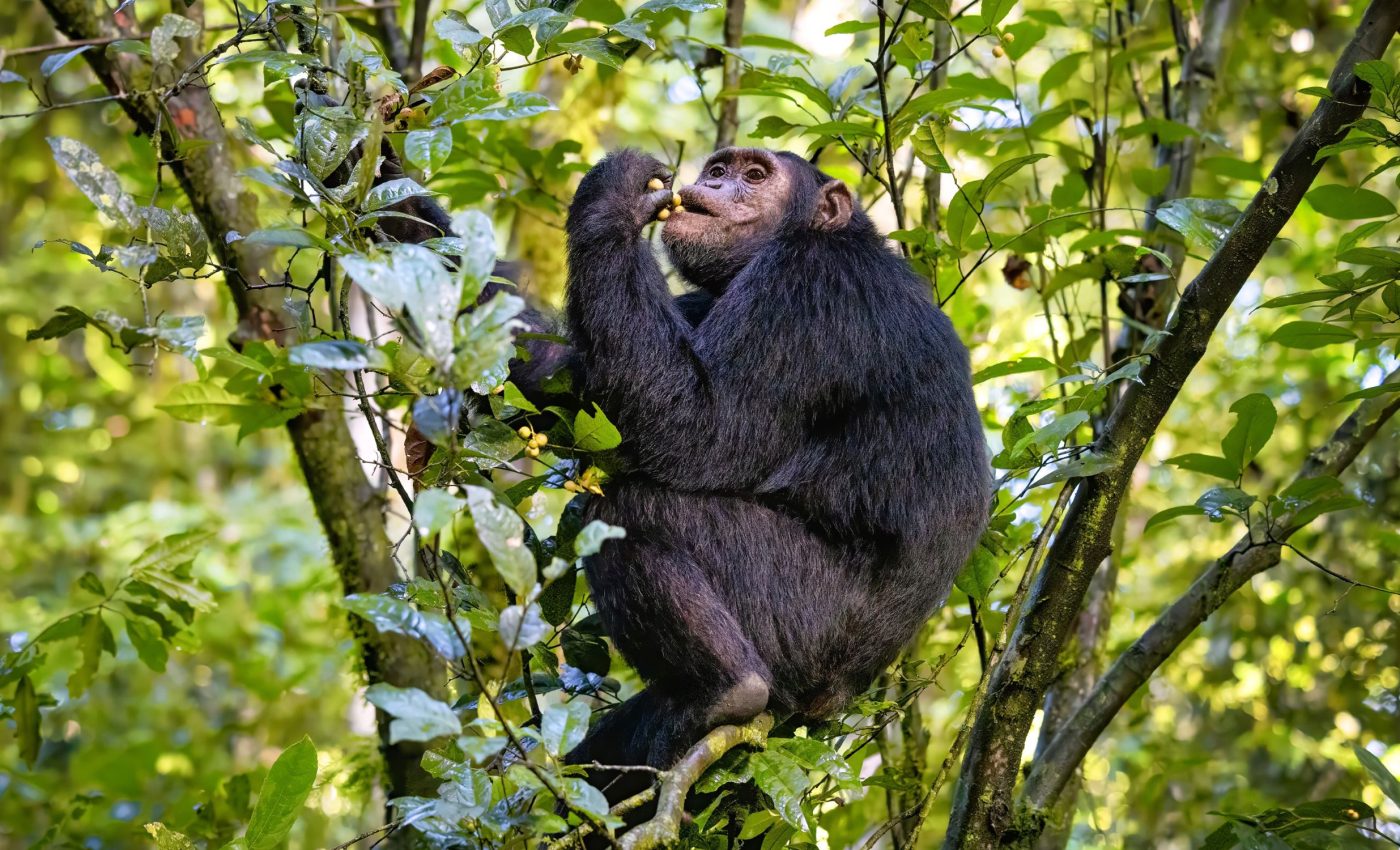
Chimpanzees know which plants to use for healing wounds
In Uganda’s Budongo Forest, chimpanzees are doing more than just surviving. They’re treating their wounds with plants, cleaning each other’s injuries, and pulling snares off their companions’ limbs.
These behaviors, documented in a new study, hint at something profound. Perhaps the roots of human medicine run deeper than we thought.
Elodie Freymann, a researcher from the University of Oxford and the study’s lead author, believes these findings offer a fresh perspective on how our ancestors might have first learned to care for wounds.
“Animals are helping each other out. They’re capable of identifying others in need and then addressing those specific needs,” Freymann said.
How chimpanzees treat wounds
For eight months, researchers watched two chimpanzee communities in Budongo – Sonso and Waibira. Injuries were common, from bites and scratches to deadly snares left by humans.
In Sonso alone, nearly 40% of the chimps bore snare scars. Freymann and her team saw twelve injuries in Sonso and five in Waibira during the study period. The injured chimps weren’t just tending to their own wounds. They were also helping each other.
A male chimp named KT managed to pull a nylon snare off his wrist. Another chimpanzee, HW, licked the wound of a female after she had been attacked.
In yet another case, a juvenile female chewed leaves, dabbed them onto her mother’s wounds, then licked her fingers and pressed them onto the injured area. This behavior wasn’t isolated to relatives. In four instances, chimps helped others unrelated to them.
Chimpanzees recognize medicinal plants
Chimpanzees don’t just grab any leaf when they get hurt. They seem to know which plants help wounds heal.
Freymann’s team documented several plant species used in wound care. Acalypha sp., for example, is known for its antimicrobial properties. Pseudospondias microcarpa has a reputation for soothing pain and reducing inflammation.
One chimp chewed Acalypha leaves, then pressed the pulp onto a cut. Another used Lasiodiscus pervillei leaves to wipe away dirt and blood.
A juvenile male named KO even mashed the stem bark of Argomuellera macrophylla and rubbed it into a wound on his leg. The behavior mirrored traditional African medicine, where these plants treat everything from skin infections to digestive issues.
“It’s likely that our shared common ancestor also would have been capable of these care behaviors as well,” Freymann noted. If chimps know which plants heal wounds, maybe early humans learned from them.
The social side of care
Prosocial care – helping others – is rare among non-human animals. But Budongo’s chimps are doing it. During the study, researchers documented seven cases of one chimp helping another. In three of these instances, the caregiver and the injured chimp were unrelated.
A male chimp named ZG licked the blood off a female’s wound after she was attacked by other chimps. In another case, NT, a juvenile female, watched her mother chew leaves and press them onto a wound. NT then did the same, imitating her mother’s technique.
Freymann sees this as evidence that chimps aren’t just mimicking; they’re actively learning.
“Our research helps illuminate the evolutionary roots of human medicine and healthcare systems,” said Freymann. “By documenting how chimpanzees identify and utilize medicinal plants and provide care to others, we gain insight into the cognitive and social foundations of human healthcare behaviors.”
Threats to chimpanzee healthcare
Chimpanzees in Budongo face a constant threat from human snares. Nearly 40% of the Sonso chimps bear scars from these traps.
Freymann’s team observed multiple instances of snare removal, some self-directed and others involving help from group members. But the danger remains.
The findings also suggest that chimpanzees in Budongo, Gabon, and other regions might share similar care behaviors. This could mean that these practices are widespread, not isolated. But there’s still much to learn.
For Freymann, the implications extend beyond chimpanzees and their use of plants. Observing how these primates use plants for healing might provide clues for new medicinal compounds.
“If we want to hone in on these amazing medicinal resources, watching and learning from the animals is an incredibly effective way to do it if it’s done ethically and responsibly,” she said.
Learning plant medicine from chimpanzees
The study doesn’t just document chimpanzee healthcare. It challenges how we think about the origins of medicine. Watching chimps chew leaves and press them onto wounds, it’s easy to imagine early humans doing the same. Maybe they learned from the chimps. Maybe they figured it out together.
Budongo’s chimpanzees aren’t doctors, but they are healers. And in their actions, we might find the echoes of our own ancient medical traditions.
Freymann’s work reminds us that medicine is not just a human invention. It might be a shared legacy, passed down from ancestors who walked the forests long before us.
The study is published in the journal Frontiers in Evolution and Ecology.
—–
Like what you read? Subscribe to our newsletter for engaging articles, exclusive content, and the latest updates.
Check us out on EarthSnap, a free app brought to you by Eric Ralls and Earth.com.
—–













